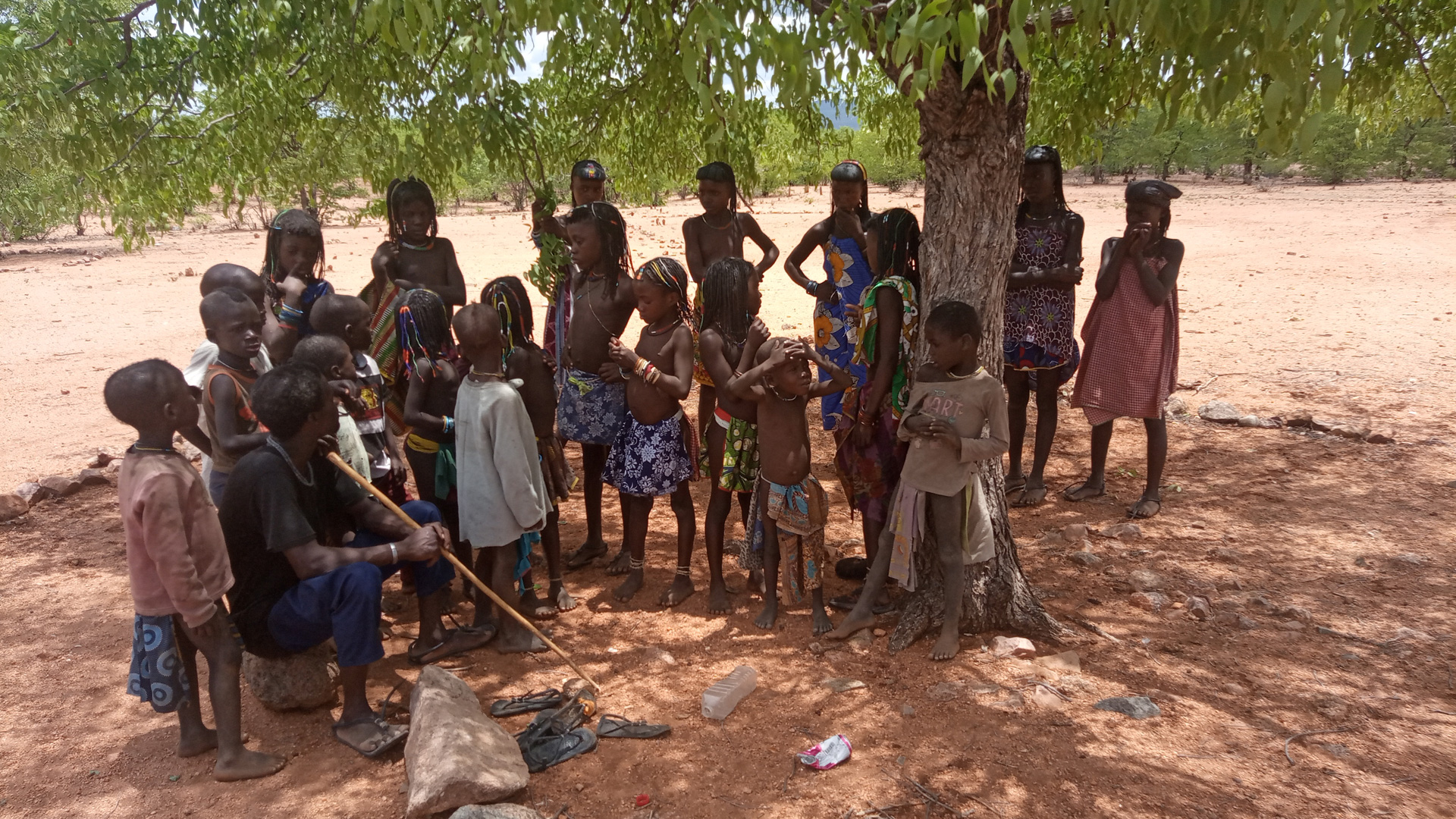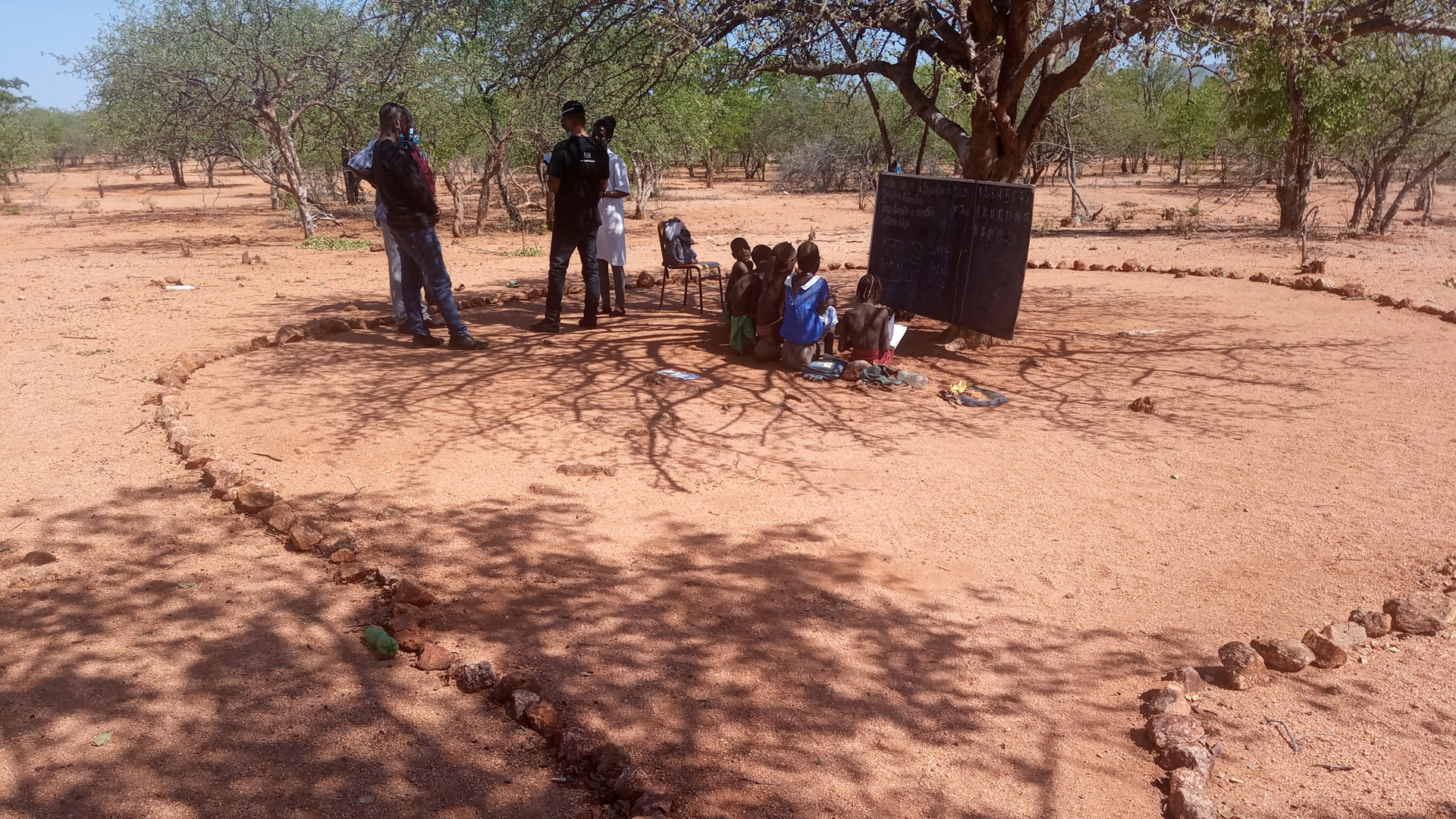Emergency assessments show a real need in Angola

Tree of wisdom: Maria and her school friends gather in their outdoor classroom
Like thousands of children in south-western Angola, 11-year-old Maria Ifikepunhe attends school on an empty stomach most days.
The worst drought in the last 40 years and rising food prices have resulted in acute food insecurity in the provinces of Benguela, Huila, Cunene, Namibe, Huambo and Kwanza Sul, although a further 15-million Angolans are also at risk.
Maria’s principal at Mafino Primary School, Paulino Diamantino, said the drought has also had a negative effect on school attendance: “Since the beginning of the drought, the school’s attendance keeps going down … boys have gone with the cattle across the border into Namibia in search of food and grass.”
Maria’s four brothers and her father are some of those who have gone in search of grazing.
Her grandfather Joaquim Duke takes her to and from school every day.
“I usually milk the cows and sell the milk at the market, but since the drought started and the cows moved across the border, I do not have any income and my remaining grandchildren don’t have milk to drink like before,” Joaquim said.
“The last meal I ate was supper last night,” Maria told the JAM Angola team that was conducting surveys to assess the extent of malnutrition in the area and who will be launching a school feeding programme from January to March 2022.
Joaquim said the feeding programme would allow Maria and her cousins to dream of a better future: “I wish my kids, especially my granddaughters, can continue with classes uninterrupted, in order to learn and have a better life when they grow up.”
High levels of acute food insecurity are present in all municipalities, however, JAM decided to start assisting in the two worst-hit of these, Cahama and Kuroka, in Cunene province.
“The two municipalities’ outlook paints a grave picture. The planting season usually starts from December, but farms are not being cleared or prepared for planting and the area is generally very dry. It may give an acute food security outlook beyond March 2022,” said George Yalla, JAM’s emergency response manager in Angola.
The school feeding programme will provide hot meals to 4600 children at 14 schools during term time. In the meantime, while schools are closed, households will receive emergency food baskets containing essentials such as ready-to-eat MannaPack rice.
“We are grateful, this is a Godsend!” said Paulino, who is also confident that a school feeding programme will encourage children to come back to class, even if there is no school building and learning takes place outside, under a large tree.
Of the 14 schools that JAM assessed, 98% have open-air classrooms, all schools but two have working toilets for both children and teachers and although 60% of schools had water tanks supplied by the municipalities, all of them were empty. There is thus also an urgent need for Water, Sanitation and Hygiene (WASH) interventions in the area.

Learning circle: Stones demarcate a classroom in rural Angola



